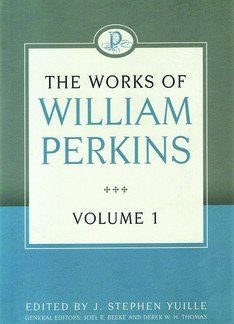Here are the works of the ‘Father of Puritanism’ in a lightly modernised, American format.
First, we have ‘A digest or harmony of the books of the Old and New Testaments’. Chronological summaries of the main events of Bible history can be helpful. However, Perkins’s version is of limited usefulness.
This is partly because of his decision to date everything from the creation, rather than using the familiar BC/AD system. It is partly because he is manifestly wrong in numerous places. It is partly because his reasoning is so opaque as to be completely unintelligible, and, mainly, because it is now four centuries out of date.
Outdated scholarship is a problem in other places too. Perkins’s understanding of psychology, for example, is based on the classical theory of the ‘four humours’ and needs translating into twenty-first-century terminology to be of much use today.
The rest of the volume is taken up with expositions of the temptations of Christ (98 pages) and the Sermon on the Mount (566 pages). The sheer length of the works means that Perkins has the space to be as comprehensive as he can be. However, the fact that he feels he has to say something about everything leads him down some strange pathways of unwarranted speculation and weird application.
An example of the former is his observation, ‘Now our Saviour Christ … during this fast felt no weakness of faintness of his body, as we ordinarily do with a little abstinence, so that his fast was not ordinary but miraculous altogether’ (p.101).
An example of the latter is his alarming statement that ‘the devil may have power over the bodies of God’s own children which are true believers, to transport them from place to place’(p.122).
Apart from these eccentricities, what is striking about Perkins in common with many other Puritans is how old-fashioned he must have been, even in his own day. It is as if the glories of Elizabethan English do not exist. The doctrine is Reformed, but the method is thoroughly medieval, with its multiplied divisions and subdivisions.
In places, it all becomes impenetrable. For example, on page 91 we have ‘first’ and ‘secondly’; on page 92 we have another ‘first’ and ‘secondly’, subdivisions of the ‘secondly’ on page 91. So when the reader reaches ‘thirdly’ on page 92, is this a further subdivision, or is it third to the two main points on page 91?
Open the book anywhere, and you will find gold; but try to read it through and you will probably lose your way.
With another nine volumes due, the finished work must be some 7000-8000 pages long. I cannot imagine who will have the patience to read it all. My guess is that the successive volumes will generally be used as reference books, for which the comprehensive indexes will be absolutely essential.






